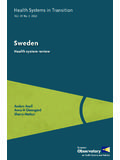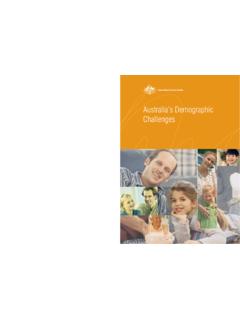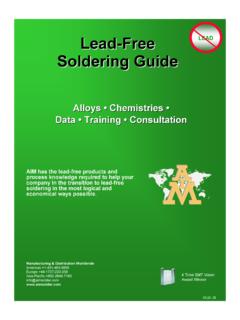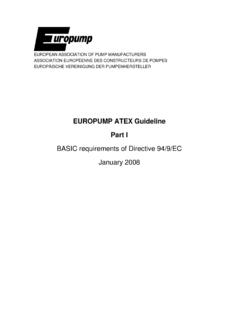Transcription of Permitting guidelines ENG-publication - OECD.org
1 INTEGRATED ENVIRONMENTAL Permitting guidelines FOR EECCA COUNTRIES OECD ORGANISATION FOR ECONOMIC COOPERATION AND DEVELOPMENT ORGANISATION FOR ECONOMIC COOPERATION AND DEVELOPMENT Pursuant to Article 1 of the Convention signed in Paris on 14th December 1960, and which came into force on 30th September 1961, the Organisation for Economic Co-operation and Development (OECD) shall promote policies designed: to achieve the highest sustainable economic growth and employment and a rising standard of living in Member countries, while maintaining financial stability, and thus to contribute to the development of the world economy; to contribute to sound economic expansion in member as well as non-member countries in the process of economic development.
2 And to contribute to the expansion of world trade on a multilateral, non-discriminatory basis in accordance with international obligations. The original Member countries of the OECD are Austria, Belgium, Canada, Denmark, France, Germany, Greece, Iceland, Ireland, Italy, Luxembourg, the Netherlands, Norway, Portugal, Spain, Sweden, Switzerland, Turkey, the United Kingdom and the United States. The following countries became Members subsequently through accession at the dates indicated hereafter: Japan (28th April 1964), Finland (28th January 1969), Australia (7th June 1971), New Zealand (29th May 1973), Mexico (18th May 1994), the Czech Republic (21st December 1995), Hungary (7th May 1996), Poland (22nd November 1996), Korea (12th December 1996), and the Slovak Republic (14th December 2000).
3 The Commission of the European Communities takes part in the work of the OECD (Article 13 of the OECD Convention). EAP TASK FORCE EAP Task Force -- the Task Force for the Implementation of the Environmental Action Programme for Central and Eastern Europe -- was established in 1993 at the Ministerial Environment for Europe Conference in Lucerne, Switzerland. The Task Force Secretariat was established at the OECD as a structural part of the Centre for Cooperation with Non-Members. Since its creation, the EAP Task Force has proven to be a flexible and practical tool for providing support to political and institutional reforms in the countries of the region.
4 After the Aarhus Ministerial Conference, the Task Force s efforts were re-focused on the countries of Eastern Europe, Caucasus and Central Asia (EECCA). More detailed information about the EAP Task Force activities can be found on the Task Force s website at: Издано на русском языке под названием: РУКОВОДСТВО ПО СИСТЕМЕ КОМПЛЕКСНЫХ ПРИРОДООХРАННЫХ РАЗРЕШЕНИЙ ДЛЯ СТРАН ВОСТОЧНОЙ ЕВРОПЫ, КАВКАЗА И ЦЕНТРАЛЬНОЙ АЗИИ (ВЕКЦА) OECD 2005 Заявки на разрешение воспроизвести часть данного издания с некоммерческими или учебными целями следует направлять по адресу.
5 Centre fran ais d'exploitation du droit de copie (CFC), 20 rue des Grands-Augustins, 75006, Paris, France, тел. (33-1) 4407 4770, факс (33-1) 4634 6719 - для всех стран, кроме США. В США следует обращаться в Copyright Clearance Center, Customer Service, (508) 750-8400, 222 Rosewood Drive, Danvers, MA 01923 или CCC Online: Все остальные заявки на перевод или воспроизведение издания или его части направлять по адресу: OECD Publications, 2, rue Andr Pascal, 75775 PARIS CEDEX 16, France.
6 FOREWORD Environmental Permitting is a key instrument for regulating a wide spectrum of industry s environmental impacts and promoting technological innovation. Since the early 1970s, most OECD countries have introduced integrated Permitting systems in order to protect the environment as a whole using best available industrial production methods. Many countries of Eastern Europe, Caucasus, and Central Asia (EECCA) have expressed their desire to progressively move toward an integrated Permitting system that would replace the current cumbersome and ineffective multitude of permits and licenses for air emissions, water abstraction, wastewater discharges, waste generation, storage and disposal, and other environmental impacts.
7 Several EECCA countries plan to use the approach of the European Union s Integrated Pollution Prevention and Control (IPPC) Directive (96/61/EC) as the principal benchmark. However, each EECCA country will need to devise a Permitting system that best suits its own legal and institutional arrangements, its own social, economic and environmental priorities. The Integrated Environmental Permitting guidelines for EECCA Countries aim to facilitate each country s reform efforts.
8 They include strategic and procedural guidance for EECCA environmental authorities in designing an effective and transparent integrated Permitting system for large industry while simplifying the Permitting regime for smaller polluters. The guidelines focus on the best practices in Permitting that could become targets for relevant regulatory and institutional reforms in the EECCA region. This document builds on the Review of Environmental Permitting Systems in Eastern Europe, Caucasus and Central Asia (EAP Task Force, 2003) which describes in detail the existing Permitting systems in the region.
9 The development and publication of the guidelines represent a crucial part of the work programme of the EECCA regional Regulatory Environmental Programme Implementation Network (REPIN). The guidelines were prepared by the network s Secretariat located in the Environment Directorate of the OECD in close collaboration with EECCA country experts. The work was carried out under the umbrella of the Task Force for the Implementation of Environmental Action Programme for Central and Eastern Europe (EAP Task Force) as part of the implementation of the EECCA Environmental Strategy.
10 The views expressed in this publication are those of the authors and do not necessarily reflect the positions of the OECD or its Member Countries. 5 TABLE OF CONTENTS CHAPTER I INTRODUCTION AND SUMMARY OF MAIN 7 CHAPTER II INTEGRATED ENVIRONMENTAL Permitting PROCEDURE FOR A COMPETENT ENVIRONMENTAL 33 CHAPTER III INTEGRATED ENVIRONMENTAL PERMIT APPLICATION FORM (WITH INSTRUCTIONS) .. 67 CHAPTER IV INTEGRATED ENVIRONMENTAL PERMIT FORM (WITH INSTRUCTIONS).. 111 CHAPTER V COMBINATION OF THE ENVIRONMENTAL QUALITY-BASED AND TECHNIQUE-BASED APPROACHES IN INTEGRATED Permitting FOR LARGE INDUSTRIAL 139 CHAPTER VI STRATEGIC APPROACH TO THE GRADUAL TRANSITION TO INTEGRATED Permitting FOR LARGE 169 CHAPTER VII REGULATING INSTALLATIONS NOT COVERED BY THE INTEGRATED Permitting 197 6 ACRONYMS BAT Best available techniques BREF BAT reference document CEA Competent


















